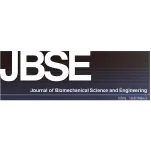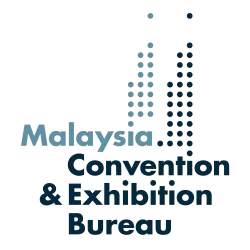Program at a Glance

Program
*Program is updated as of November 2023
0730 – 0830
Registration
Corus 2
0830 – 0900
APBIOMECH2023 Opening Ceremony
Ballroom 1
0900 – 1000
Keynote 1
Title: Functional Roles of Mechanosensory Osteocytes in Bone Adaptation: In-vitro and In-silico Studies
Speaker: Prof. Taiji Adachi (Kyoto University, Japan)
Chair: Prof James Goh
Ballroom 1
1000 – 1030
Refresment & Poster Tour 1
Level 1
1030 – 1130
Podium Session P1A
Chairs: Prof Chwee Teck Lim and Dr Muhamad Noor
Ballroom 1
Podium Session P1B
Chairs: Prof Toshiro Ohashiand and Ir Dr Nasrul Anuar Abd Razak
Ballroom 2
Podium Session P1C
Chairs: Dr Krishnamurithy Genasan and Dr Abdul Hadi
Corus 1
1130 – 1230
Podium Session P2A
Chairs: Prof Chwee Teck Lim and Dr Muhamad Noor
Ballroom 1
Podium Session P2B
Chairs: Prof Toshiro Ohashiand and Ir Dr Nasrul Anuar Abd Razak
Ballroom 2
Podium Session P2C
Chairs: Dr Krishnamurithy Genasan and Dr Abdul Hadi
Corus 1
1230 – 1415
Lunch
Dondang Sayang Coffee House, Ground Floor
1415 – 1500
Plenary 1
Title: Smart Telerehabilitation Robotics for Dementia
Speaker: Prof. Fong-Chin Su (National Cheng Kung University, Taiwan)
Chair: Prof Takuji Ishikawa
Ballroom 1
1500 – 1600
Forum 1: “Women in Biomechanics”
Title: Women in Biomechanics: Challenges and Opportunities in the AP Region
Panels:
– Prof. Lizhen Wang (Beihang University, China)
– Dr Juliana Usman,(Universiti Malaya, Malaysia)
– Dr Kim Hebert-Losier (University of Waikato, New Zealand)
Moderator: Ir Dr Nasrul Anuar Abd Razak
Ballroom 1
1600 – 1615
Refreshment Break
Level 1
1615 – 1715
Podium Session P3A
Chairs: Prof Takeo Matsumoto and Dr Krishnamurthy Genasan
Ballroom 1
Podium Session P3B
Chairs: : Prof Taiji Adachi and Dr Juliana
Ballroom 2
Podium Session P3C
Chairs: Prof. Andi Isra Mahyuddin and Dr Nooranida Ariffin
Corus 1
0800 – 0830
Registration
Corus 2
0830 – 0930
Keynote 2
Title: Development of an Affordable Polycentric Knee Prosthetic in Indonesia: From the Design Stage to the Market
Speaker: Prof. Dr. Andi Isra Mahyuddin (Institut Teknologi Bandung, Indonesia)
Chair: Prof Takeo Matsumoto
Ballroom 1
0930 – 1015
Plenary 2
Title: Bioengineering Digital Lungs for Predicting Patient-Specific Treatment Outcome
Speaker: Prof. Merryn Tawhai (University of Auckland, New Zealand)
Chair: Prof Seungbum Koo
Ballroom 1
1015 – 1045
Refresment & Poster Tour 2
Level 1
1045 – 1145
Yamaguchi Medal Award Winners Presentation
Chair: Prof Ashvin Tambyah
Ballroom 1
1145 – 1245
Podium Session P4A
Chairs: Prof Ashvin Tambyah and Dr Nooranida Ariffin
Ballroom 1
Podium Session P4B
Chairs: Prof Peter Lee and Dr Aizreena
Ballroom 2
Podium Session P4C
Chairs: Prof Fong-Chin Su and Dr Muhamad Noor
Corus 1
1245 – 1415
Lunch
Dondang Sayang Coffee House, Ground Floor
1415 – 1500
BMEC Presentation
Title: Beyond the Megapixel Count: Understanding the Ins and Outs of Optical Motion Capture Technology
Speaker: Dr.Pavel Bogachko (Qualisys AB)
Chairs: Dr Rizal Razman
Ballroom 1
Podium Session P5B
Chairs: Prof Lizhen Wang and Dr Aizreena
Ballroom 2
Podium Session P5C
Chairs: Prof Bing-Shiang Yang and Prof Tatacipta Dirgantara
Corus 1
1500 – 1600
Symposium : “Biomechanics in Orthopaedics”
Title: Biomechanics in Orthopaedics
Invited Speakers:
– Prof. Azlina Amir Abbas (Universiti Malaya, Malaysia)
– Prof. Dr. Tunku Kamarul Zaman (Universiti Sains Malaysia, Malaysia)
– Assoc. Prof. Dr. Ardiyansyah Syahrom (Universiti Teknologi Malaysia Malaysia)
– Dr. Rukmanikanthan Shanmugam (Prince Court Medical Centre, Malaysia)
Chairs: Dr Krishnamurthy Genasan
Ballroom 1
1600 – 1615
Refreshment Break
Level 1
1615 – 1715
Podium Session P6A
Chairs: Prof James Goh and Prof Hsiang-Ho Chen
Ballroom 1
Podium Session P6B
Chairs: Prof Dato’ Seri Ir Dr Noor Azuan Abu Osman and Dr Rukmanikanthan
Ballroom 2
Podium Session P6C
Chairs: Prof Fong-Chin Su and Assoc Prof Ardiyansyah
Corus 1
1930 – 2200
Official Conference Dinner
IPC Cornerstone
0800 – 0830
Registration
Corus 2
0830 – 0930
Keynote 3
Title: A Patient-Centric Measure-Model-Manufacture-Manage (4M) Platform for Safer Personalised Medical Implants
Speaker: Prof. Peter Lee (Melbourne University, Australia)
Chair: Prof Tatacipta Dirgantara
Ballroom 1
0930 – 1015
Plenary 3
Title: Simulation Of Track Cycling: Practices from the National Team
Speaker: Dr. Edin Kardin Suwarganda (National Sports Institute, Malaysia)
Chair: Prof Taeyong Lee
Ballroom 1
1015 -1100
Refresment & Poster Tour 3
Level 1
1100 – 1200
Podium Session P7A
Chairs: Dr Edin Kardin Suwarganda and Dr Aizreena
Ballroom 1
Private Session
APAB Official Meeting
Corus 2
1200 – 1500
Lunch
Dondang Sayang Coffee House, Ground Floor
1500 – 1600
Forum 2: “Robotics Rehabilitation: Current Practice and Way Forward”
Title: Robotics Rehabilitation: Current Practice and Way Forward
Panels:
– Dr. Norhamizan Hamzah (Universiti Malaya Medical Centre, Malaysia)
– Mr Banister Langgum (Cyberdyne Inc.)
– Mdm Wahidatul Abdah (WQ Park Health and Rehabilitation Centre)
Moderator: Dr Nooranida Ariffin
Ballroom1
1600 -1700
Closing and Award Ceremony + Introduction to 13th AP-BIOMECH2025 + Group Photo
Ballroom 1
1700 -1715
Refresment & Poster Tour 3
Level 1
0800 – 1200
Post-Conference Activity Tour (Private Paid Tour)
0830 – 1200
Malaysian Society of Biomechanics Post-Conference Event
Plenary Speaker
2021/12/03 (FRI)
13:00-13:45 (UTC+8)
Chairs:
Smart Telerehabitation Robotics for Dementia
Abstract:
An in-depth understanding of hand functional performance may help improve not only movement, but also cognitive function. Intact human motor control relies on both intrinsic and extrinsic factors. Impaired finger force control is thought to be one of the barriers that primarily affects the ability of older adults to perform daily instrumental activities such as grooming, drinking, and eating. Therefore, a series of hand function control training systems have been developed to explore characteristics of force patterns when conducting functional tasks and to enable training and assessment of finger force control in functional postures. Five force sensors are utilized to record the applied force by the fingers. With these systems, patients’ motivation is boosted through interactive games, while visual and auditory feedback are integrated for better intervention outcomes. In addition, near-infrared spectroscopy (NIRS) was used to monitor hemodynamic changes of the brain, which showed that the finger-force control training task resulted in higher brain activation in older adults than in younger adults.
Tipr, the cognitive/fine motor trainer, is designed especially for early to middle stage of dementia. The design is based on a previous product; PETS, which had conducted a successful clinical research to show the promising and scientific evidence-based progress in memory maintenance and improve brain activation on cognitive related brain areas. The system also offers the training of hand-eye coordination, finger force application, and finger synchronization with more brain activation involved. Tipr integrates nostalgic music and serious games to facilitate the cognitive/fine motor training. Training in patients with mild cognitive impairment significantly enhanced hand dexterity and cognitive function, consistent with previous findings that fine motor performance can distinguish patients with cognitive impairments from healthy individuals.
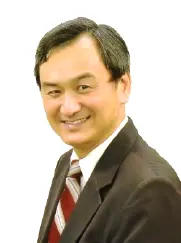
Professor Fong-Chin Su
Department of Biomedical Engineering, Medical Device Innovation Center National Cheng Kung University, Tainan, Taiwan
2021/12/03 (FRI)
13:00-13:45 (UTC+8)
Chairs:
Bioengineering digital lungs for predicting patient-specific treatment outcome
Abstract:
We are establishing a ‘digital human’ framework with a focus on pulmonary disease, as a basis to develop mechanistic imaging and model-based biomarkers and to biophysically predict patient response to treatment. Our approach utilises routinely-acquired medical imaging to derive metrics for lung structure, from tissue heterogeneity to vascular morphometry and size to statistical shape models of lung and fissure shape. From the same imaging, we also derive geometric models of the lung, airways, and blood vessels that are specific to the individual patient, and introduce physiological measurements as boundary conditions for the simulation of soft tissue deformation, perfusion, ventilation, and gas exchange. This talk will consider quantitative multi-scale descriptions of lung structure and function as a tool for understanding lung tissue disease extent and progression – particularly in diseases that affect the compliance of the lung tissue – and the application of the digital human modelling framework to analyse haemodynamics and non-invasively estimate the extent of vascular remodelling in diseases of the pulmonary circulation.

Prof. Dr. Merryn Tawhai
University of Auckland, NZ
2021/12/03 (FRI)
13:00-13:45 (UTC+8)
Chairs:
Simulation of track cycling: practices from the National team
Bio:
Elite track cyclists may sprint up to speeds exceeding 70km/hr. An achievement that is mainly attributed to improved training methods that enhance physical capability. Nonetheless, in competitive events where the winner can be determined using a photo finish, any other advantage e.g., aerodynamics and bike efficiency, that contribute to performance is also important. Therefore, National track cycling teams may invest considerable resources in research and development to gain a performance advantage over competitors.
The Malaysian National track cycling team started their research and development over a decade ago, delivering a bronze and silver medal at the Olympic Games in Rio and Tokyo, respectively. As part of that research and development, computational modelling and simulation of track cycling was co-developed. The computation primarily concerns the power loss to rolling resistance and air resistance. Herewith, potential aerodynamic gains that may reduce this power loss, can then be used to compute speed gains. Current modelling and simulation of track cycling also includes physiological parameters of individual specific cyclist such as maximum torque, maximum cadence, and a fatigue component to better predict race outcomes.
Furthermore, advancements in technology allow us to test the efficiency of e.g., drive chains and bike frames. Which then can be included in the modelling and simulation of track cycling for improved outcome predictions. This talk will provide snapshots of the practices of the Malaysian track cycling team and the modelling used.
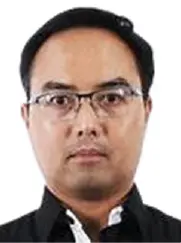
Dr. Edin Kardin Suwarganda
Senior Sports Biomechanist
Institut Sukan Negara
Malaysia
Keynote Speakers
2021/12/02 (THU)
13:00-13:45 (UTC+8)
Chairs:
Functional roles of mechanosensory osteocytes in bone adaptation: In-vitro and in-silico studies
Abstract:
In bone adaptation by remodeling, mechanosensory osteocytes are believed to play important roles in regulating bone-resorbing osteoclasts and bone-forming osteoblasts. It has been believed that osteocytes, embedded in the mineralized bone matrix, play as mechanosensory cells and their intercellular communication through a network is essential to the spatial regulation of bone remodeling. In this study, to clarify the functional roles of mechanosensory osteocytes in bone adaptation, we took multiscale biomechanics approaches with a combination of in-vitro and in-silico experiments. We discuss how the mechanical stimuli sensed by osteocytes are integrated through the network to regulate macroscopic trabecular bone structure that meets its functional demands as a load-bearing structure.
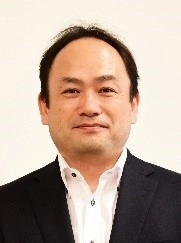
Professor Taiji Adachi
Laboratory of Biomechanics
Department of Biosystems Sciences
Institute for Life and Medical Sciences
Kyoto University
2021/12/03 (FRI)
13:00-13:45 (UTC+8)
Chairs:
A patient-centric measure-model-manufacture-manage (4M) platform for safer personalised medical implants.
Abstract:
Advances in computer-aided engineering, patient-specific computer models, and additive manufacturing transform patients’ treatment through personalised solutions. Manufacturers and hospitals are now trialling ‘bespoking’ as the new standard of care in orthopaedics and maxillofacial surgery. However, there are significant challenges to facilitating personalised medical implant commercialisation and widespread use. Regulatory frameworks for personalised implants are in their early stages. Current standards for testing off-the-shelf devices are not directly transferrable to devices designed for individual patients. Instead, future test standards could be based on information from the patient’s anatomy and even lifestyle. There is no well-defined framework or methodology to support the use and increase personalised implants’ success rate. The fabrication of the implant is only the first step. Successful treatment requires a comprehensive approach to optimise the use of the personalised medical device. This presentation will focus on the development of a seamless framework based on the Measure-Model-Manufacture-Manage (4M) for point-of-care manufacturing. Comprehensive biomechanical measurements will be used to build patient-specific biomechanical models to represent the underlying physiology of the human body. The models will be used to analyse scenarios that are too expensive or infeasible to perform on patients directly (e.g. loading an implant to failure in the human body). The aim in the measure-model stage is to optimise implant/device design that considers all the biomechanical information before manufacturing using 3D printing. Finally, the measure-model-manufacture becomes a reinforcing loop that improves patient management and outcome. The presentation will also discuss our experience and benefits, from a researcher’s perspective, working closely with physicians, industry, and government leaders in pushing the frontiers of personalised medical implants.
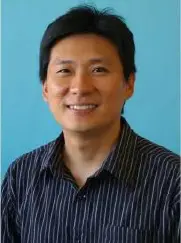
Professor Peter Lee
Department of Mechanical Engineering at The University of Melbourne
Director of the Australian Research Council (ARC) Training Centre
2021/12/03 (FRI)
13:00-13:45 (UTC+8)
Chairs:
Development of an affordable polycentric knee prosthetic in Indonesia: from the design stage to the market
Abstract:
The number of Indonesians who have lost limbs and require prosthetic legs has been increasing annually, likely due to the high rate of motorcycle accidents. However, many amputees could not afford the expensive commercial prosthetics, and have to rely on basic and limited options that use monocentric knee joints. To address this problem, a cost-effective and improved prosthetic knee design based on a four-bar linkage mechanism is proposed. The knee-joint components will be modular and compatible with prosthetic industry standards. A systematic design approach will be used to ensure that the product meets the needs of the users. Additionally, this presentation discusses a collaboration scheme that involves a university’s corporation to help bring the design to market, local prosthetic manufacturers to produce the leg prosthetics, and a humanitarian organization that will procure and distribute the products to the amputees. This scheme is proposed to foster the emergence of new university start-ups that are focused on social entrepreneurship.

Professor Dr. Andi Isra Mahyuddin
Biomechanics – Mechanical Design Research Group
Faculty of Mechanical and Aerospace Engineering
Institut Teknologi Bandung
Yamaguchi Medals Winners
2021/12/03 (FRI)
13:00-13:45 (UTC+8)
Chairs:
Cell and Molecular Biomechanics
Bio:
Dr. Ishida is an Assistant Professor in the Mechanical Engineering Department at Kobe University. He earned his Ph.D. in Medical Engineering from Tohoku University in 2018. He worked at Osaka University as a Project Assistant Professor before joining Kobe University in 2019. He specializes in Computational Biomechanics, particularly in the areas of cellular flow and gastric flow research.

Shunichi Ishida
Graduate School of Engineering, Kobe University
2021/12/03 (FRI)
13:00-13:45 (UTC+8)
Chairs:
Organ Biomechanics
Bio:
Ryota Toyohara received B.Sc., M.Sc. and Ph.D. from Hokkaido University in Japan in 2019, 2021 and 2023, respectively. During M.Sc., he spent two-months at Medical University of Graz in Austria. Since 2023, he has been Assistant Professor (specially appointed) at Hokkaido University in Japan. His research interests involve stress environment and morphological characteristics of joints on tissue biomechanics. He has published 4 scientific journal papers.

Ryota Toyohara
Division of Mechanical and Aerospace Engineering, Faculty of Engineering Creative Research Institution Hokkaido University
2021/12/03 (FRI)
13:00-13:45 (UTC+8)
Chairs:
Tissue Biomechanics
Bio:
Taeksang Lee received B.S. and M.S. degrees in Mechanical Engineering from Sungkyunkwan University in 2014 and 2016, respectively, and Ph.D. degree from Purdue University in 2020. He had been a Staff Engineer in Mechatronics R&D Center at Samsung Electronics from 2020 to 2021. In 2021, he joined Myongji University, where he is currently an Assistant Professor in Department of Mechanical Engineering. His research interests are focused on soft tissue biomechanics based on computational mechanics, machine learning, and multiphysics modeling and simulation.
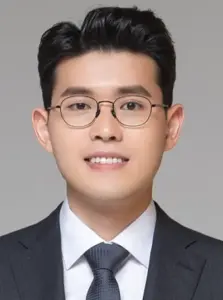
Taeksang Lee
Department of Mechanical Engineering, Myongji University (MJU)
2021/12/03 (FRI)
13:00-13:45 (UTC+8)
Chairs:
Gait and Kinesiology
Bio:
Yu-Lin You currently holds the position of Assistant Professor at the Department of Sports Medicine, China Medical University, Taiwan. She completed her Bachelor’s and Master’s degrees in Sports Medicine at Kaohsiung Medical University in Taiwan, followed by the attainment of a Ph.D. in Biomedical Engineering from National Cheng Kung University. She also undertook postdoctoral training at both National Cheng Kung University and Kaohsiung Medical University.
Her association with China Medical Univer sity commenced in 2022.
Her interdisciplinary research centers on the biomechanics of human movement, musculoskeletal diseases or injuries, and the therapeutic effects of exercise in elderly populations. Throughout her career, she has made substantial contributions, exemplified b y her publication record of 11 journal articles and 15 international conference papers. Notably, her team received the BEST ORAL AWARD at the A P Biomechanics Conference in 2019 and the BEST POSTER AWARD at the International Sports Biomechanics Conference and Annual Meeting of Taiwan Society of Biomechanics in Sports in 2011.

Yu-Lin You
Department of Sports Medicine, China Medical University
2021/12/03 (FRI)
13:00-13:45 (UTC+8)
Chairs:
Gait and Kinesiology
Bio:
Kohta Ito is a researcher at the National Institute of Advanced Industrial Science and Technology (AIST). He received Ph.D. in Engineering from Keio University in 2017. He worked at Keio University and Osaka University as a research associate before joining AIST in 2023. His research focuses on understanding the mechanical functions embedded in the human foot complex for the applications in various fields, including the medical, ergonomics, and physical anthropology field. He received the LG Research Award in the 4th Congress of the International Foot and Ankle Biomechanics in 2014.

Kohta ITO
Digital Human Research Team, Artificial Intelligence Research Center, AIST
Symposium Talks
2021/12/03 (FRI)
13:00-13:45 (UTC+8)
Chairs:
Gait and Kinesiology
Bio:
Professor Dr. Tunku Kamarul Zaman is currently serving as the Director of the Advanced Medical and Dental Institute (AMDI) at Universiti Sains Malaysia in Penang, Malaysia, on secondment. He is an orthopaedic surgeon specializing in upper limb and microsurgery. He earned his medical degree (M.D.) from the National University of Malaysia in 1998. After working as a medical officer in the Ministry of Health, he pursued his Master’s in Orthopaedics (M.S.Ortho) at the University of Malaya. He became a lecturer there upon completing his training in 2004. During his specialist training, he also obtained a diploma in tissue banking from the National University of Singapore in 2003. He has an extensive publication record, has presented research internationally, and holds numerous administrative positions, including previously serving as the Director of the University of Malaya Medical Centre (UMMC).
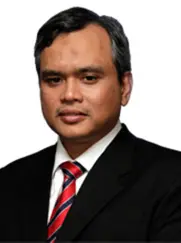
Prof Dr. Tunku Kamarul Zaman
Director of Advanced Medical & Dental Institute (AMDI),
Universiti Sains Malaysia, Penang,
Malaysia
2021/12/03 (FRI)
13:00-13:45 (UTC+8)
Chairs:
Gait and Kinesiology
Bio:
Prof. Dr. Azlina Amir Abbas is a Professor of Orthopaedic Surgery at the Faculty of Medicine, Universiti Malaya. She was a Past President of the Malaysian Orthopaedic Association. Currently she heads the Joint Reconstruction Unit in her hospital, is the Chief Editor of the Malaysian Orthopaedic Journal and Chairperson of Selection for Postgraduate Orthopaedic Training (SPOT) subcommittee of the Orthopaedic Specialty Committee. She is a Steering Committee Member for the Training of Trainers Programme and was also a writing group member for the National Orthopaedic Curriculum, both of which were under the National Postgraduate Medical Curriculum Project.

Prof. Dr. Azlina Amir Abbas
Department of Orthopaedic Surgery, Universiti Malaya, Malaysia
2021/12/03 (FRI)
13:00-13:45 (UTC+8)
Chairs:
Gait and Kinesiology
Bio:
Ardiyansyah Syahrom is Associate Professor at school of Mechanical Engineering, Faculty of Engineering, Universiti Teknologi Malaysia, UTM. Presently, he is the director of Medical Devices and Technology Centre (MEDiTEC), Institute Human Centred Engineeing (iHumEn). He is by profession a Mechanical Engineering with special interest in Biomechanics, Bone, Biomaterials and Sports Engineering. His previous administrative duties also include the Director of Sports Innovation and Technology Centre (SITC). He has published in reputed Journals and supervises many post-doctoral, doctoral and other post-graduate as well as undergraduate students. He sits in Innovation section in Malaysia Medical Devices Authority (MDA) committees, a member of many international societies, a reviewer to a number of academic journals and is the editor in Chief of the Journal Medical Devices Technology.
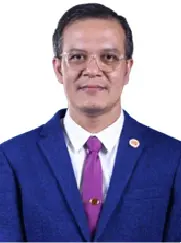
Associate Prof Dr Ardiyansyah Syahrom
Associate Professor at school of Mechanical Engineering,
Faculty of Engineering, Universiti Teknologi,
Malaysia
2021/12/03 (FRI)
13:00-13:45 (UTC+8)
Chairs:
Gait and Kinesiology
Bio:
Dr. Rukmanikanthan Shanmugam, specializing in orthopaedic surgery, and currently practicing at a Prince court Medical Centre, Malaysia. Beyond his orthopaedic work, he has a profound passion for fields like mechanics and electronics. During his tenure as a senior lecturer at the University of Malaya, he had the privilege of overseeing the biomechanics laboratory. In this capacity, he actively guided and collaborated with students and fellow educators in the execution of biomechanical tests and the development of experiments related to orthopaedics. Furthermore, he embarked on a six-month fellowship in biomechanics at the AO Institute in Davos, Switzerland. This experience was particularly stimulating, as it provided an opportunity to collaboratively address complex challenges, harnessing their collective knowledge and expertise to find innovative solutions.
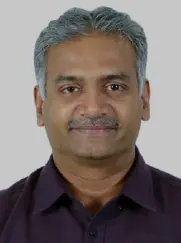
Dr. Rukmanikanthan Shanmugam
Senior Orthopaedic Consultant Prince Court Medical Centre, Kuala Lumpur, Malaysia
Women in Biomechanics
2021/12/03 (FRI)
13:00-13:45 (UTC+8)
Chairs:
Gait and Kinesiology
Bio:
Dr. Juliana Usman is a Senior Lecturer from the Department of Biomedical Engineering, Universiti Malaya. She is a member of the Centre for Applied Biomechanics, UM and the appointed secretary for the Malaysian Society of Biomechanics. She had served as the Head of the Biomedical Engineering Department in the Faculty of Engineering, Universiti Malaya from 2019 to 2021. She is a certified Chartered Engineer (CEng) from the Engineering Council of UK and a member of the Institute of Engineering and Technology (UK) and the Board of Engineers (Malaysia). Her research areas are in Sports Biomechanics (Injury Prevention and Performance Enhancement) and in Biomechanics and Motion Analysis. Her research interests include researches on knee OA biomechanics analysis and intervention, lower limb contributions in driving simulation study, biomechanics analysis in sports ie. badminton, bowling, rugby, table tennis, etc. and the effectiveness of massage chairs on multiple disorders including sleep and anxiety.
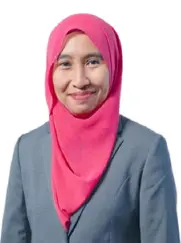
Dr. Juliana Usman
Department of Biomedical Engineering
Faculty of Engineering,
Universiti Malaya, Malaysia
2021/12/03 (FRI)
13:00-13:45 (UTC+8)
Chairs:
Gait and Kinesiology
Bio:
Dr Kim Hebert-Losier is a Senior Academic lead for Te Huataki Waiora School of Health (Tauranga Campus) and lead biomechanics researcher at the University of Waikato Adams Centre for High Performance. She has led and managed the biomechanics laboratory at the University of Adams Centre for High Performance since 2016, and has worked at the Swedish Winter Sports Research Center, Nebraska Athletics Performance Laboratory United States and the National Sports Institute of Malaysia

Dr. Kim Hebert-Losier
Faculty of Health, Sport, and Human Performance
University of Waikato
New Zealand
2021/12/03 (FRI)
13:00-13:45 (UTC+8)
Chairs:
Gait and Kinesiology
Bio:
Lizhen Wang is a Professor in School of Biological Science and Medical Engineering of Beihang University. Her research focused on cross disciplinary research of biomechanics and biomaterials. She is actively involved in the development of various novel medical devices, such as biomimetic minimally biodegradable nucleus pulposus scaffold, nanofibrous tissue engineering scaffold with adjustable mechanical and electrical properties. Since 2012, Dr Wang’s lab focuses on two main categories: soft tissue biomechanics, and bionic materials mechanics, then design the protective devices and medical devices to match with human tissues. Lizhen has generated over 100 peer-reviewed journal papers including 80 journal articles, 20 conference proceedings and book chapters. She is the Chair of World Association for Chinese Biomedical Engineers (WACBE) Young Committee, Associate Editor of Computer Methods in Biomechanics and Biomedical Engineering (CMBBE).


